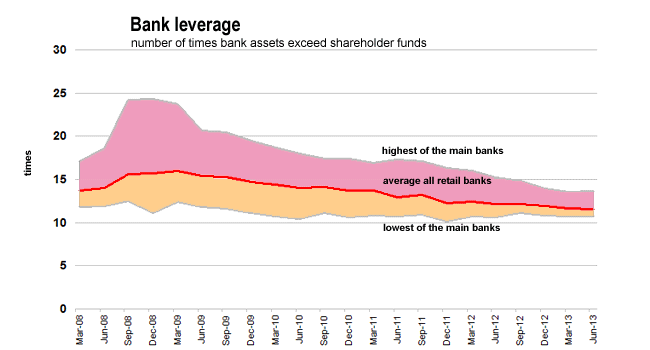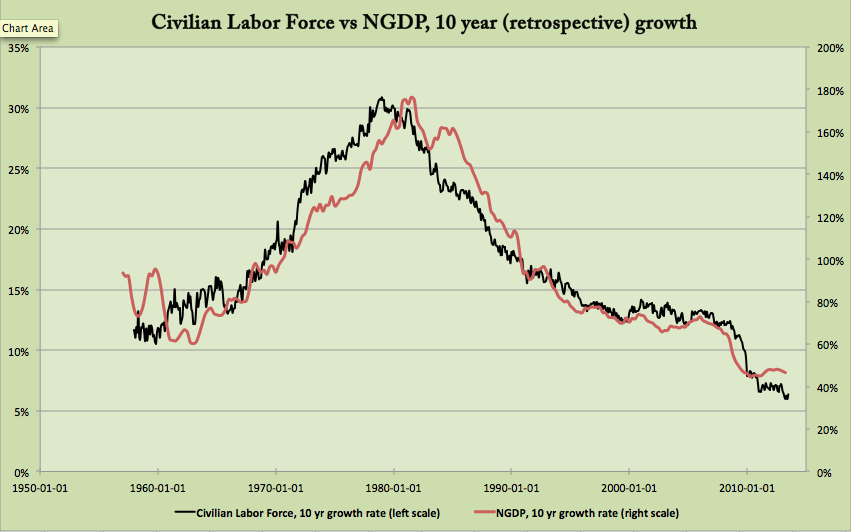
Here's my Top 10 links from around the Internet at 2 pm today.
As always, we welcome your additions in the comments below or via email to bernard.hickey@interest.co.nz.
See all previous Top 10s here.

1. Where is New Zealand's Greek Yoghurt brand? - Fonterra has had its hands full lately just making sure it can process the latest wall of milk without using dirty pipes.
But it would be great if it could invent and sell some great new dairy brands.
It's always been a bit ambivalent about being a consumer dairy company.
At its heart it remains a processor of ingredients, and mostly one type of ingredient: milk powder.
That's a pity.
There's a big new trend in the world of dairy products. People oop North just love Greek yoghurt. It must be the only Greek growth story at the moment.
Here's the WSJ with a great piece on the Greek yoghurt boom.
These are dark days for fans of regular yogurt.
The creamy snack is being edged out on grocery store shelves by its thicker, tarter, higher-protein sibling, Greek yogurt.
Over a third of the yogurt in a typical grocery store is now Greek, in varieties from low-fat to fruit-on-the-bottom to tubes for kids. Because shelf space is limited, the Greek squeeze means consumers have had to say goodbye to some varieties of traditional-style yogurt and more obscure flavors. (R.I.P. Stonyfield Farm's Whole Milk White Chocolate Raspberry and Strawberry Acai flavors.) Pudding cups, margarine and other products with the misfortune of usually sitting near yogurt also are harder to find.
2. Fast food workers unite - Reuters reports on the growing move for fast food workers in America to unite into unions to push for higher pay.
Fast-food workers in more than 50 cities Thursday are striking for fair pay and the right to form a union — the biggest walkout to hit the industry. This latest round of labor unrest comes 50 years after hundreds of thousands of Americans, led by Martin Luther King Jr., joined the March on Washington for Jobs and Freedom, demanding not only civil rights, but also good jobs and economic equality.
One demand of the 1963 marchers was raising the federal minimum wage to $2 an hour. In today’s dollars, that’s roughly $15 an hour — what the striking fast-food workers are now calling for.
3. The rich feel fantastic - The poor not so much. Here's Bloomberg reporting on the widening gap in confidence between the rich and the poor.
4. Bank leverage - We at Interest.co.nz care a lot about leverage. Here's David Chaston's excellent table (and chart below) showing just how levered our banks are. They are better than they were, but arguably still too leveraged.
Here's Simon Johnson writing at Bloomberg about how bank leverage is the defining issue of our age.
5. A two tier workforce - Here's the Guardian with the latest on Britain's increasingly divided workforce structure.
6. Bad jobs - CEPR writes about the strange predominance of low wage jobs growing in America.
Why are we seeing so many bad jobs?
On the one hand we have the technology story which tells us the economy has changed. The jobs that used to provide a decent standard of living for the middle class are disappearing. In our brave new world of robots and computers the economy creates some number of very good jobs for the people with the right skills and it creates bad jobs for everyone else.
The other line of reasoning is that it is not technology that has changed, rather it is people's desperation that is forcing them to take bad jobs that they would not have considered otherwise. In this view the bad jobs were always there, but most people had better alternatives so they didn't take them. What's changed from the period when we didn't see so many bad jobs is that we have a much weaker labor market. The weakness of the labor market is the key factor in this story.
7. Cow tipping is not a real thing - Here's the proof.
To maintain its economic growth and provide for its massive population, China must reconcile two powerful, converging trends: energy demand and resource scarcity. One prime example of this tension is the country’s coal use and water supply.
According to a new WRI analysis, more than half of China’s proposed coal-fired power plants are slated to be built in areas of high or extremely high water stress. If these plants are built, they could further strain already-scarce resources, threatening water security for China’s farms, other industries, and communities.
9. It's always, always about demographics - Interfluidity writes here that the arrival of the baby boomers into the workforce was partly responsible for the mad inflations of the 1970s. It's always their fault. ;)
The root cause of the high-misery-index 1970s was demographics, plain and simple. The deep capital stock of the economy — including fixed capital, organizational capital, and what Arnold Kling describes as “patterns of sustainable specialization and trade” — was simply unprepared for the firehose of new workers. The nation faced a simple choice: employ them, and accept a lower rate of production per worker, or insist on continued productivity growth and tolerate high unemployment. Wisely, I think, we prioritized employment.
But there was a bottleneck on the supply-side of the economy. Employed people expect to enjoy increased consumption for their labors, and so put pressure on demand in real terms. The result was high inflation, and would have been under any scenario that absorbed the men, and the women, of the baby boom in so short a period of time. Ultimately, the 1970s were a success story, albeit an uncomfortable success story. Going Volcker in 1973 would not have worked, except with intolerable rates of unemployment and undesirable discouragement of labor force entry. By the early 1980s, the goat was mostly through the snake, so a quick reset of expectations was effective.
7 Comments
#1. Greek yogurt. Would be great if it was. There is some good stuff, but notice well that it is often "Greek Style Yogurt". Which is advertising code for "Not Greek Yogurt." Look carefully.
Reasonable yogurt can be found. But often is the 'style' rather than substance and filled with added sugar and some squirts of flavour - in the corporate mode of manufacture.
#4: NZ banks are "arguably still too highly leveraged". Arguable how? By what criteria? What level of leveraging would interest.co.nz consider acceptable, and on what basis?
#9: Once again an article dealing with a US analysis of US data is copy-pasted without the slightest attempt to consider whether and how it is relevant for the NZ context. Where's the journalistic or informational value?
he's saying the economy didn't need so many workers. The same here in NZ (except that it feeds the powerful property/construction sector).
http://www.treasury.govt.nz/downloads/pdfs/mi-jarrett-comm.pdf
#1, been making my own for a few years now from direct from the farm organic milk. When I tranfer from the 30L pot into smaller containers the whey floats to the top under refridgeration and can be decanted off. Works with kefir or conventional yoghurt. Put your own flavours in through the blender and it is pretty tasty. Kefir grains even make a good gueze.
#1. Why is it a pity that Fonterra has 'always been a bit ambivalent ' about adding value?
If Fonterra is so ambivalent, doesn’t that provide opportunity for another entity to add the value and clip the dairy ticket?
DIRA provides milk below cost from Fonterra to foreign owned processors that don't add any value above what milk powder is worth, just an alternative for farmer supply, allowing generations of cooperative capital to be cashed up, used to bid up price of land/bach, and ultimately make its way to offshore coffers.
Henry van der Hayden believes Fonterra is developing added value product, but its impact has been diluted by increasing supply. http://www.radionz.co.nz/news/rural/221146/sir-henry-still-defending-fonterra
Over the last 100 years the cooperative dairy industry has evolved to add value to milk in line with adopting evolving technological developments. This is reflected by evolving payment structures to farmers, which drive on farm innovation and evolution. An example of this is development of ability to measure protein, which resulted in increased use of breeding stock which yielded higher milk protein composition. Farmer owned cooperatives have added more value than given credit. Apparently the greater scrutiny as a result of demutualisation will result in the necessity for Fonterra to develop more added value. The world is littered with the remains of corporate investor companies which were going to conquer the world with such rhetorical spin.
Fonterra can make yoghurt.



We welcome your comments below. If you are not already registered, please register to comment.
Remember we welcome robust, respectful and insightful debate. We don't welcome abusive or defamatory comments and will de-register those repeatedly making such comments. Our current comment policy is here.